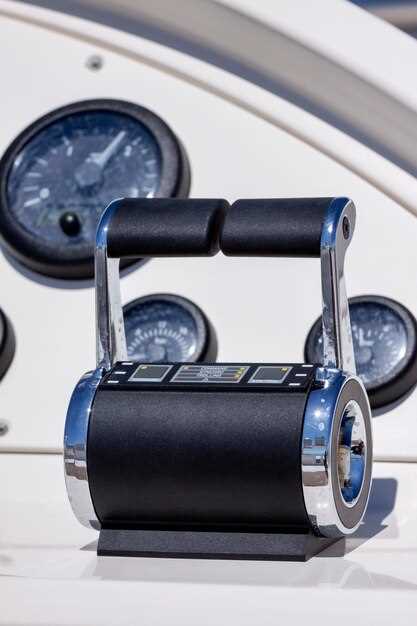
Maintaining a boat’s engine is crucial for its long-term performance and reliability. One of the key components that significantly affects the engine’s efficiency is the marine cooling system. Proper maintenance of this system ensures that the engine remains cool, preventing overheating and potential damage. In this article, we will explore essential tips for keeping your boat’s cooling system in optimal condition.
The marine environment poses unique challenges that can impact your boat’s cooling system. Saltwater, debris, and marine growth can clog the cooling passages, reducing efficiency and leading to overheating issues. Regular inspection and cleaning are vital practices that every boat owner should adopt to ensure the longevity of the engine and its cooling system.
In addition to cleaning, it is important to monitor the coolant levels and quality regularly. Using the right type of coolant, as recommended by the manufacturer, can enhance the system’s performance and extend its lifespan. By following these maintenance tips, boat owners can help safeguard their investment and enjoy trouble-free outings on the water.
Regular Inspection of Cooling System Components
Regular inspection of the cooling system components is crucial for maintaining the efficiency and longevity of your boat’s marine engine. Various parts work together to ensure optimal temperature management, and any oversight can lead to significant issues.
Begin with checking the raw water intake strainer to ensure it is clean and free of debris. A clogged strainer can restrict water flow, leading to overheating. Regular cleaning and monitoring of this component will help maintain proper cooling performance.
Next, inspect the hoses and clamps for signs of wear or corrosion. Check for cracks, leaks, or soft spots in the hoses, as this can severely affect the cooling system’s efficiency. Replace any damaged hoses immediately to prevent failures while out on the water.
It’s also essential to periodically examine the heat exchanger and intercooler for blockages or scaling. These components are vital for transferring heat and should be flushed regularly to remove any buildup that could impair performance.
Additionally, ensure that the water pump is functioning correctly. A failing water pump can lead to inadequate water circulation, resulting in overheating. Listen for unusual noises and monitor the pump’s output during your inspections.
Lastly, remember to check the thermostat. Ensure that it operates smoothly and opens at the right temperature, as a faulty thermostat can disrupt the cooling flow, causing potential damage to the engine.
By conducting regular inspections and addressing any issues promptly, you can ensure your boat’s cooling system remains efficient, ultimately prolonging the lifespan of your marine engine and enhancing your overall boating experience.
Cleaning and Flushing the Cooling System

Regular maintenance of your boat’s cooling system is essential for the longevity of the marine engine. Over time, debris, salt, and other contaminants can accumulate, impacting the efficiency of the cooling system. Cleaning and flushing the cooling system not only removes these buildup materials but also ensures optimal performance.
To begin the cleaning process, gather the necessary materials, including a flushing kit, fresh water, and a suitable cleaning solution. Follow your engine manufacturer’s guidelines when selecting a cleaning agent, as some solutions might be too harsh for certain marine engines.
Start by stopping the engine and allowing it to cool down. Once safely cooled, connect the flushing kit to the engine’s cooling intake. This is usually located at the raw water intake or a designated cooling port. With the kit securely attached, turn on the fresh water supply. If you are using a cleaning solution, ensure it is mixed according to the manufacturer’s instructions.
Run the engine at idle speed while water flows through the system. This process will help dislodge any accumulated debris. Allow the engine to run for approximately 10 to 15 minutes, during which time the cooling system will be thoroughly flushed. Make sure to monitor the engine temperature to prevent overheating.
After completing the flushing, turn off the engine and disconnect the flushing kit. Allow the engine to drain for a few minutes to ensure all contaminants have been expelled. Inspect the raw water strainer and cooling system components for any signs of wear or corrosion, replacing parts as necessary.
Regularly cleaning and flushing the cooling system, ideally every season or after long trips in saltwater, will significantly enhance your marine engine’s lifespan. Incorporating this routine maintenance practice into your overall boat care can provide peace of mind and improve performance on the water.
Monitoring and Managing Coolant Levels

Maintaining proper coolant levels is essential for the longevity and efficiency of your marine engine’s cooling system. Regular monitoring helps prevent overheating, which can lead to severe engine damage. It is crucial to understand the role coolant plays in keeping your engine at optimal temperatures, especially during high-performance conditions.
Check Coolant Levels Regularly
Establish a routine to check the coolant levels in your boat’s cooling system. This should be done at least once a month and before each outing. A simple visual inspection of the coolant reservoir can provide immediate insight into whether levels are adequate. If you’re consistently finding low levels, investigate for potential leaks or other issues.
Use the Correct Coolant
Ensure that you are using the recommended coolant for your marine engine. Different engines may require specific types of coolant that are suitable for marine environments. Using the wrong type can lead to corrosion or inadequate cooling performance. Consult your engine’s manual for the specific requirements.
Monitor for Contamination
While checking coolant levels, look for signs of contamination. Oil or sediments in the coolant can indicate issues such as a failing head gasket or internal leaks. Addressing these problems early can save you from costly repairs and ensure the cooling system operates smoothly.
Maintain the System’s Integrity
Inspect hoses, caps, and connections regularly for wear and tear. A damaged hose or loose connection can lead to coolant loss and result in overheating. Be proactive and replace any components that show signs of degradation. Proper maintenance supports the integrity of your marine cooling system.
Flush and Replace Coolant
Over time, coolant can degrade due to contaminants and exposure to heat. Follow the manufacturer’s guidelines for flushing the cooling system and replacing the coolant. This not only maintains the performance of your engine but also prolongs the life of the cooling system.
By diligently monitoring and managing coolant levels, you can ensure that your marine engine remains in optimal condition, enhancing both performance and longevity on the water.
